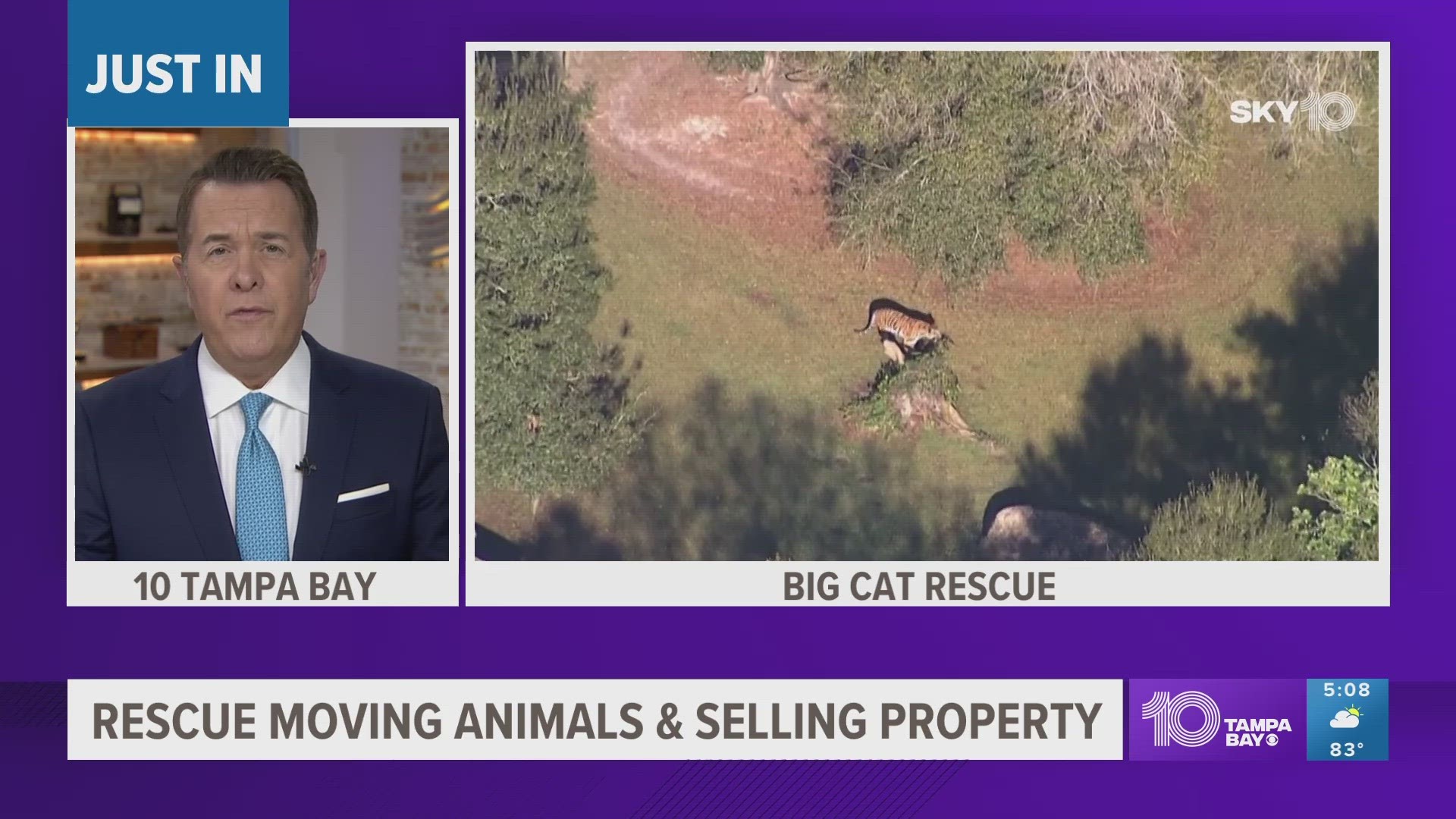TAMPA, Florida — The popular cat sanctuary in the Tampa Bay area owned by Carole Baskin will soon send a majority of its residents to an accredited sanctuary in Arkansas, ending a chapter for the nationally known cat lady.
In a memo from Howard Baskin, he explained how Big Cat Rescue, which received a surge of attention following the Netflix documentary, Tiger King, plans to merge big cat populations with Turpentine Creek Wildlife Refuge in Eureka Springs, Arkansas.
The decision comes after decades of caring for mistreated cats, pushing for legislation to protect the animals and a drop in their big cat population at Big Cat Rescue.
Big Cat Rescue on Easy Street in Tampa was once home to nearly 200 big cats. Since then, the population has shrunk to 119 big cats in 2011 and now, only 41. This was part of the goal of Howard and Carole Baskin though, he explained.
"For thirty years the mission of Big Cat Rescue has been expressed as having three prongs: to give the best life we could to the cats in our care, to stop the abuse, and to avoid extinction of big cats in the wild," the memo reads. "For those same thirty years we have always said that our goal was to 'put ourselves out of business,' meaning that there would be no big cats in need of rescue and no need for the sanctuary to exist."
Over the last 11 years, the Baskins and other wildlife agencies and sanctuaries have worked to get lawmakers to pass the Big Cat Public Safety Act. It finally passed and was signed into law on Dec. 20, 2022. By its passage, it's the Baskin's hope that the abusive industry of cub petting will be put to an end. The law will also phase out private ownership in backyards by people who do not have a USDA Exhibitor's license.
Howard Baskin also mentioned his and Carole's ages as he's 73 and Carole is 62 in their decision to move forward with the merger. In addition, with a lower cat population, they feel its an increasingly inefficient use of donor funds per cat to operate a facility like Big Cat Rescue.
"Once we have no cats at the sanctuary, we will sell the sanctuary property and use the proceeds to fund these species-saving projects in the wild," the memo states.
At Turpentine Creek, the wildlife refuge is able to house its existing 80 big cats and accept 30 or so more cats once enclosures are built on its 450 acres. Howard Baskin said donor funds will be much more efficient by consolidating the cats in Arkansas.
Construction at the new enclosures at Turpentine Creek has already gotten underway and it's expected to take six months, the memo says. Baskin said they'll need donations to help fund the new homes for the big cats.
As far as which cats will remain at Big Cat Rescue, "one tiger (Kali) and five bobcats (Moses, Bailey, Winter, Summer, and Val) are expected to remain at Big Cat Rescue for the time being," Baskin said. Additionally, a few other cats will stay there as their medical conditions are monitored.
Big Cat Rescue staff members that stay until their position is no longer necessary will receive 12 months of severance and a reference from Big Cat Rescue for any future positions they pursue, the memo says.
The sanctuary where the cats are being transferred, Turpentine Creek, is open to the public for tours, so don't worry, staff, donors, volunteers and others who have supported Big Cat Rescue can still visit the cats there.

